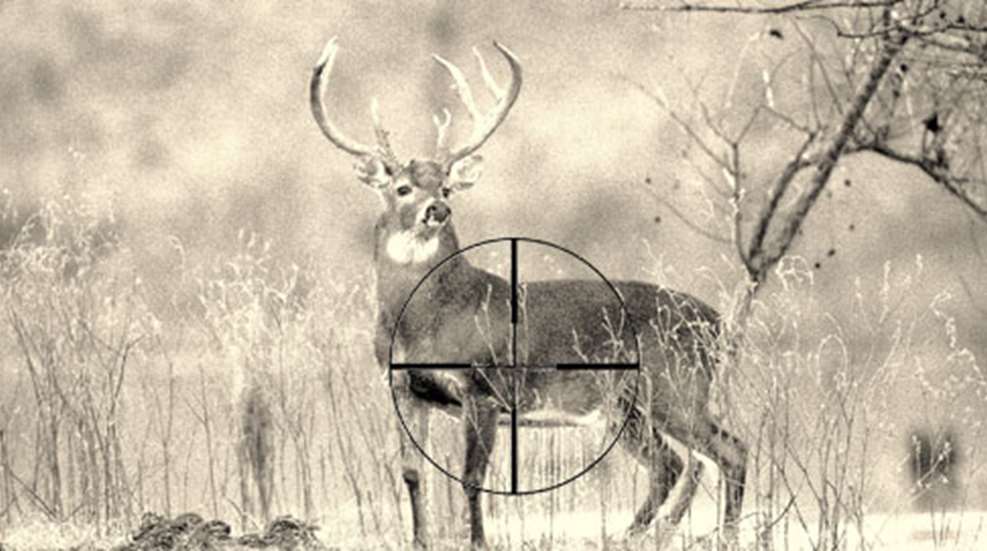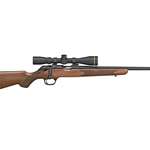
4/25/2013
Ballistic programs and reticles were designed to improve accuracy at long range by helping you predict the flight of your bullets. But for the shooting most sportsmen and hunters do, a duplex reticle and some time on the range can go a long way to accomplishing the same goal.
With most American-made riflescopes, the reticle is in the second focal plane. As such, the size of the reticle changes in relation to the size of the target as magnification is adjusted. This is the reason ballistic reticles are calibrated to work only on a specific magnification setting.
The hash marks and/or dots on a reticle correlate to a given measurement on the target; however, they can serve as additional aiming points, too. For the latter, the shooter must know the bullet’s exact trajectory and at what specific distances the mark or dot correlates with the amount of drop, thereby ensuring that he applies the proper holdover.
“Duplex”-style reticles feature a thin center wire with heavier outer sections. The distance between the intersection of the wires at the center and the point on the wire where it thickens can be used as one unit that subtends, or equals, a specific, yet different, measurement at various ranges. The distance will also change as magnification increases or decreases (Diagram). If you know what the unit subtends at specific ranges, you can use it to judge the distance to the target and be sure of a first-shot hit—even at long distances. Let’s look at ranging first.
If you know that the distance between the intersection and the transition in the vertical stadia line of your reticle subtends—or equates to—16 inches at 400 yards, and that a distant antelope’s chest fills that space, then you can be reasonably sure the animal is approximately 400 yards away. If the animal’s chest is twice as large as the space, it is half as far. If the chest is a little smaller, then you can estimate that the animal is about 450 yards distant. The key is knowing the subtension of different sections of the reticle at various ranges and the average size of the game or objects you are attempting to target. Leupold has been including such information with its variable scopes for years.
Essentially the same process is applied when using a duplex-type reticle to compensate for bullet drop. If the shooter knows the amount of drop at a certain range and the subtension of the space on the reticle at that range, then he can use the reticle to estimate proper holdover. Here’s an example.
Suppose you’re using a rifle chambered in .270 Win. with 130-grain loads. If the rifle is zeroed at 250 yards—about 2½-inches high at 100 yards—the bullet impacts about 3¼-inches low at 300 yards. “Holding center” on a big-game animal’s vitals—or an 8-inch target—at the latter distance will result in a hit; however, at 400 yards, where the bullet strikes 15-inches below the point of aim, compensation is required. If your riflescope’s subtension is 4 inches at 100 yards, then at 400 yards it will be 16 inches. For the 400-yard target, simply use the bottom taper point of the vertical wire as an aiming point to apply sufficient holdover.
Even if reticle subtension does not correspond to the bullet’s trajectory at that range, you can adjust subtension by changing the magnification dial on your variable-power riflescope.
To determine the proper setting, put a 6- to 8-inch-diameter target at the top edge of a piece of poster board and set it at 400 yards. With the rifle zeroed about 2 inches or so high at 100 yards, fire a three-shot group while aiming at that circle target. Next, go downrange and place a stick-on target atop the center of your group on the poster board, then go back to your rifle and hold on the top target and adjust the magnification until the taper point on the bottom vertical cross wire is centered on the bottom target.
To confirm your adjustment, leave the magnification setting there and fire another three-shot group at the top target, but use the taper point of the bottom cross wire and aim at the center of the top target. All three shots should hit the top target. Now, all you’ll need to do to shoot and hit at 400 yards is set your magnification to the determined power and aim with the taper point of the bottom cross wire.
Does it work? I took my first mule deer at almost 350 yards using that method. I’ve also used it successfully on smaller game. In addition, if you know the subtension of your reticle and can reference a ballistics program, you can fine tune the technique to your cartridge and rifle, and set it for the range at which you will most likely need help shooting.
Most riflescope manufacturers list reticle subtension information in their catalogs. If not, they can usually provide it upon request. Nikon greatly simplifies the process with its SPOT ON program, which makes the calculations for you, if you have a Nikon riflescope with a Nikoplex reticle. Still, you’ll need to confirm the calculations on the range to be sure. But this is not a bad thing. The more you shoot, the better you’ll get, and it never hurts to practice all you can when the range gets long.



































